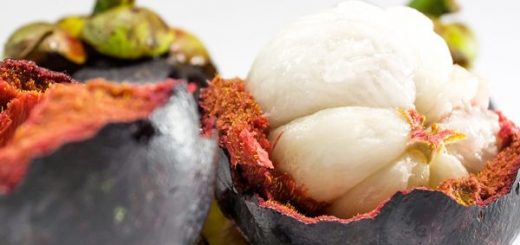How to store carrots: 13 ways

To keep carrots fresh, juicy and crispy for the winter, you need to choose the right place and create suitable conditions.
Crunchy, healthy, sweet, carrots are the perfect ingredient for many dishes and are simply a delicious treat. It contains beta-carotene, lutein, vitamins C, D, E, B. Including this vegetable in the daily diet is useful for both children and adults. But in order for it to be constantly at hand and retain its properties for long winter months, it is necessary to provide it with suitable conditions. In this article we tell you everything about the proper storage of carrots for the winter in cool places such as a cellar, as well as in an apartment.
Everything about storing carrots for a long time
How to ensure the safety of root vegetables
Crispy, fresh, colorful vegetables in the middle of winter—beautiful! But you need to take into account several factors that will allow you to enjoy them for many months. We’ll figure out how to prepare carrots for storage for the winter, how to properly create a microclimate for them, and what non-obvious points to keep in mind.
Variety and selection of specimens
It’s better to think about preserving vegetables for the winter right away when choosing varieties. Mid-season and late-season varieties are more suitable for winter maturation. Moscow Winter, Red Giant, Altair, Queen of Autumn, Carlena will perform well during long-term storage and generally have good taste and consistency.
Elasticity, crunchiness and overall fresh appearance are the criteria that people pay attention to when buying carrots in the store. If you choose your vegetables well, they will last as well as those from your garden. The tops, if any, should be fresh and lush. Sluggish and dull indicates a long stay in the store, which means this significantly reduces the life of the house.
Harvesting and preparing root crops
It is recommended to harvest in dry, sunny weather. Even better – in the evening. During a whole day of exposure to the sun, the carrot will accumulate sugar, and at night it will use it up. By seizing the right moment, you will get the sweetest fruits. Remove root crops from the ground carefully; you can first dig up the soil a little – this will simplify the process. Storing carrots from the garden immediately after harvesting cannot be organized. First you need to carry out preparatory procedures.
Let’s look at how to trim carrots for winter storage. First you need to trim the greens, leaving about 2 cm. Next is drying. In regions with stable, predictable weather, you can leave vegetables in the beds, covering them with a thin cloth from direct sun. If the days are humid, send the crop to a dry room. For the first stage of drying, a few hours are enough.
After this, remove the dried soil – carefully and dryly. It is important not to use water! Storage of washed carrots will be short-term. Let there be some soil left. Now trim again. Trim the heads to 2 cm, as well as the thin ends – they germinate first. After all the procedures, you should let the vegetables “rest” – leave them spread out in a cool, dry place.
Before planting root crops, carry out a selection. Damaged carrots with signs of disease will have to be left “for now” and eaten quickly (of course, if the damage is not very significant). Sort healthy specimens by size – dividing at least into large and small. Such sampling is not necessary, but will increase the chances of saving the harvest until spring or even summer, since small carrots ripen faster.
Environmental indicators
A temperature around 0…+3 degrees is optimal for bright root vegetables. Any lower and the vegetable will become bitter. Higher and the shelf life will be reduced. But, of course, this does not mean that it is impossible to keep carrot stocks at home – this has its own characteristics and timing, which we will talk about later. The root crop loves high humidity – up to 95%. Some utility rooms may have this level, but in some other cases you can use equipment to raise the level.
How to store carrots in the cellar for the winter
The basement, cellar , garage and other unheated utility rooms are always the optimal location for vegetables. Here they can be stored almost until the next harvest. Those degrees at which carrots feel great for a long time are exactly there. The humidity of cellars depends on various factors. But, for example, you can store other root vegetables nearby, which humidify the air around. When storing carrots in a cellar for the winter, it is better to avoid placing fruits next to them – they will lead to rapid ripening and possible rotting.
In wooden containers
Wooden boxes are an easy way to organize supplies. You can place vegetables of different types in the same boxes (but of different sizes) – then the cellar will look neat and orderly. To remove excess moisture, line the bottom of the container with old newspapers – this will prevent rotting.
In wicker baskets
Baskets made from natural materials are a good alternative to wooden containers. They also allow air to pass through, giving the vegetables inside the opportunity to “breathe.” Small and medium-sized baskets are well suited for storing not very large supplies – they are convenient to place on shelves and racks.
In a plastic container
Plastic containers for storing root vegetables should be selected with large holes so that air can freely enter the container. Just place the specimens there so that you can put another container on top without crushing the contents.
On the grid
Specimens placed in mesh bags should not be placed directly on the floor of the cellar or basement. It is better to raise the bookmark a little so that it does not freeze from the cold coming from the floor. You can place the grids on top of closed drawers, on shelves or in a rack. Not very voluminous nets can be hung on hooks.
In boxes
Another placement method is cardboard boxes. It is good for those who do not know how to store carrots underground and in what container. It is very simple and does not require the purchase of special storage boxes – you can use existing boxes from under anything. The material itself will perform the same function as, for example, newspaper placed under carrots in a plastic container.
In the bins
Bins are sections of a cellar or barn closed by partitions without a lid. Essentially, these are huge boxes, part of their walls are the walls of the building or room itself. As with potatoes, this method also works well for carrots. The floor in the bins should be covered with a thick layer of old newspapers, paper, wood chips, straw or moss. This layer will not allow excessive cold to pass through.
How to store carrots in sand
Covering with sand is a very popular method among gardeners. This is the answer to the question of how to store carrots in the basement to maximize their life. The fact is that sand maintains a stable temperature, does not allow moisture to be lost, and generally acts as a kind of preservative. It can also have an antibacterial effect, which means that the bookmark is not afraid of fungus. It is better to use barely damp sand. To obtain this consistency, mix 1 bucket of sand with 1 liter of water. Cover the bottom of the box in which the carrots will lie with polyethylene and make holes in it to allow air to enter. Next, pour 2-3 cm of material, lay the fruits on it so that they do not touch, and repeat the layers.
How to save vegetables in an apartment
In this section, we will explore various ways to best store carrots at home. It seems that there are very few options and they are worse than a basement or cellar, but this is not at all the case.
In the kitchen
In apartment conditions, it is important to increase air humidity by all means. It is almost impossible to overdo it here, because carrots love a level that is difficult to create at home in any case – about 90%. The kitchen is more humid than other rooms; Additionally, you can use a humidifier . Small containers with fruits can be placed on the shelves of a corner cabinet or under the sink. They will last for several months – from 3 to 5, depending on the conditions created.
Keep a small amount in the drawer with other vegetables for daily cooking. This way you can get it out in a matter of seconds.
On the balcony
A glass balcony is a good alternative to a basement. Here, bright root vegetables will not last that long, but 4-5 months are guaranteed. To protect carrots from direct sunlight and large temperature changes, install a vegetable storage box on the balcony . This can be either a regular low cabinet or a special thermal box. In the latter case, the shelf life is six months.
In the pantry
The pantry room is very convenient for “wintering” the harvest – you can store a large volume, and get it out quickly, and the conditions are better than apartment ones. The easiest option is to put the vegetables in boxes and place them on the floor or shelves. You can also use the sand method in the pantry – use smaller boxes, not as large as, for example, for a cellar, or replace them with buckets. An additional option is multi-tiered organizers. In each section you can place certain types of vegetables, including carrots. Root vegetables will live in the pantry for at least 5 months, and possibly even 6-7.
How to store carrots in the refrigerator
One of the simplest methods for placing fruits in the refrigerator is to dry peel them and place them in containers. You can also use craft bags and baskets inside them. So the harvest will last 1-1.5 months.
Some choose a different strategy. Vegetables, on the contrary, are washed thoroughly with a hard sponge. How to trim carrots for storage in the refrigerator? It is recommended to cut off the ends on both sides and allow the cuts to heal. Then they put the root vegetables in plastic bags, release as much air as possible from them and tie them up. The finished bookmark is put into the vegetable compartment. Soon condensation will appear inside – do not be alarmed by it. It will prevent carrots from losing their elasticity and juiciness.
For some more time, you can save the carrots cut in the way you want. For example, you often cook soups. Then you don’t have to prepare a vegetable for them every time – put the carrot cubes in a zip bag and put them in the refrigerator. So it can lie from 2 to 4 weeks.
Considering your culinary routine, decide for yourself how to store carrots – in bags or simply in the refrigerator compartment, whole or chopped.
In the freezer
The freezer will allow you to save carrots for more than 6 months. Of course, it’s unlikely that you’ll be able to place the entire harvest here, but you can make convenient preparations for different dishes. There is no point in storing whole fruits in the freezer. It’s better to cut them into cubes or bars, grate them, mix them with other vegetables, and place them in containers or ziploc bags. If you chose the latter, then make them as compact as possible. Distribute the contents inside more flatly, release excess air, use a straw to simulate a vacuum.
Dried
Dried carrots are not as common as, for example, dried apples. But root vegetables in this form are also useful in the kitchen. Many housewives like to dehydrate that part of the crop that is on the verge of being thrown away: small, dry, quickly withering. Preparing vegetables is easy. Boil the washed carrots for 15-20 minutes, cover with cold water, and cool completely. Next, cut into circles and place either on a special electric dryer or on a baking sheet for drying in the oven. It will take approximately 8-10 hours for the final result.
Unlike fresh, dried carrots should be stored in as dry conditions as possible. Almost any place will do, the main thing is to choose an airtight container. Glass jars with lids work best. You can choose a different volume depending on the volume of the product. Add dried carrots to soups, stir-fries, and stews. You can use the preparation for 5-6 months.











